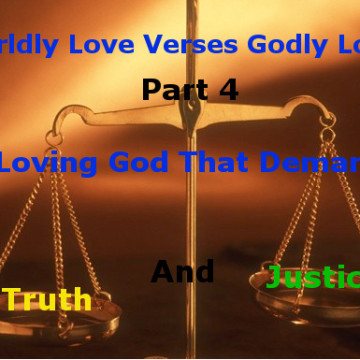Your Behavior Is Not Your Identity

 Do you know how to separate your identity from your behaviors? Your identity should not come from what you have done, neither good nor bad, but rather it should come from what God has done for you. God put His Spirit in earthen vessels. He knows you are flawed, but if you live a lifestyle of repentance, which is changing your mind, you will work at aligning your thinking to agree with God and His truth remembering, “For He made Him who knew no sin to be sin for us, that we might become the righteousness of God in Him.” (2 Corinthians 5:21 NKJV) You are the righteousness of Christ by your agreement with Him, not by performing perfect behaviors.
Do you know how to separate your identity from your behaviors? Your identity should not come from what you have done, neither good nor bad, but rather it should come from what God has done for you. God put His Spirit in earthen vessels. He knows you are flawed, but if you live a lifestyle of repentance, which is changing your mind, you will work at aligning your thinking to agree with God and His truth remembering, “For He made Him who knew no sin to be sin for us, that we might become the righteousness of God in Him.” (2 Corinthians 5:21 NKJV) You are the righteousness of Christ by your agreement with Him, not by performing perfect behaviors.
Separate your identity from your behaviors.
You can change all of your behaviors and correct your failures; however, if you wear your behaviors as a faulty identity, you allow them to permanently define you. If you then operate in self-contempt, you are locked into negative defeating patterns. If your foundation of self-image is secure, you will not let messages that you receive, or other people’s perceptions define how you see yourself.
If someone praises you and gives you a positive affirmation, it always feels good. If they are critical or negative to you, although it doesn’t feel good, you cannot allow it to alter yourself perception and kick you off of your foundation. To be a slave to the opinions of others puts you on a rollercoaster ride of emotions and hinders you to be yourself because you need the acceptance and approval of others to define you.
In all of our lives we have different things that can direct our identity. I call them the Four Mirrors:
Four Mirrors That Direct Your Identity
- The mirror on the wall is where you view your reflection, which summarizes who you are as a person. It is your own personal perception.
- The mirror of other people’s opinions is what reflects back to you; it is how other people see you. It is how they perceive you from the outside.
- The blackened mirror is like a black hole that you peer into, and what is hidden within is not visible. It contains the wounds, pain, and rejection messages that have defined your identity. They are hidden inside of you where no one, not even you, can see them; however, they control how you view yourself.
- The mirror on the ceiling is God’s perspective reflected back to you. It shows your true identity, worth, and your perfect design created by God.
The Mirror On The Wall
How YOU see yourself. Your reflection in this mirror is the view developed from the messages that you have received and embraced through experiences. Other people do not see you the same way as you see yourself.
- Appearance / Style
- Personal History
- Accomplishments / Failures
- Education / Career
- Possessions / Finances
The Mirror Of Other People’s Opinions
Other people view you with same categories as you view yourself. This mirror shows you a reflection of how other people see you in the above list, based on the following determinations.
- Their Standards
- Their Opinions
- Their Expectations
The Blackened Mirror
This is a black mirror that you can’t see into, and it represents a mental stronghold that is subconsciously locked inside of you. It defines how you see yourself.
- Forgotten Memories
- Past Experiences
- Buried Expectations
- Wounds, Deep Hurts, and Rejection
- Unmet Needs
- Hidden Motives
- Shame and Self-Contempt
- Self-Limiting Thoughts and Beliefs
- Sabotaging Behavior Patterns
The Mirror On The Ceiling
How God views you.
- You are cherished.
- You have infinite value.
- You can do all things through Him.
- You are highly prized.
- You are God’s friend and heir.
- God has plans to prosper you and not to harm you.
- You are an overcomer.
- Your weakness is made perfect in His strength.
The portrait that you paint of yourself is often tainted, and the formation of your identity may have been altered by life’s circumstances.
What did life teach you about the world and relationships?
- Positive or negative
- Safe or unsafe
- Free to choose or lacking a voice to speak your opinion
- Overcomer or victim
- Loved or abused
- Accepted or rejected
- Hopeful or hopeless
- Capable of change or doomed to repeat the patterns
Your identity is how you see yourself in every area. The messages you received must be sifted through and the negative ones replaced. People with faulty identities see themselves as victims in a hostile world, and endure what comes their way instead of challenging it, or attempting to change it. Instead of challenging faulty beliefs, you may feel stuck and embrace them. When you believe you are getting what you deserve, and receive negative consequences from your sabotaging behaviors, the result is that you reinforce the faulty beliefs that you embrace. This continues to produce distorted thoughts, poor choices, and behaviors.
If you see yourself as a failure, your faulty core beliefs will cause more negative thoughts, producing poor choices and mistakes. When you see yourself as having unlimited potential, you can face life’s challenges with hope and be an overcomer!
When you embrace a faulty message, it becomes a foundational belief that you act upon both consciously and unconsciously. Day after day, new experiences preach similar messages to you. These messages are layered upon the original message like stacking bricks one on top of another. The messages develop thinking patterns that grow and repeat, forming faulty core beliefs or mental strongholds until you challenge these thoughts.
When you believe something to be true, your mind sifts through all the information that you have received daily, and everything is sent through this filter to form a perception. You hold fast to messages that agree with that belief, and reject messages that do not. The belief then becomes more and more embedded in how you perceive yourself. Day after day and year after year, you develop the original message into a massive cognitive distortion or mental stronghold. At the center of these messages are the faulty core beliefs that must be identified and torn down so that you do not respond in agreement to them daily.
The goal is to learn how to identity how your self-image developed, so that you can tear down faulty core beliefs and reshape your view of self. Did your family model acceptance and love to you, and were you personally affirmed as a valuable person, or was your family emotionally absent, critical, or shaming?
Identifying how well you received the ten essential needs helps you to see the messages that you received. Those needs are:
- Acceptance.
- Affection
- Appreciation
- Approval
- Attention
- Comfort
- Encouragement
- Respect
- Security
- Support
Remember this is for identification, not judgment. Many of the messages that you receive and send yourself are not planned or intended. In your development to maturity and even beyond, your family, community, and peer groups, formed your opinions of self and sent many identity messages. Once you identify those messages, you can then replace them with what God says about you. To Him, you are priceless. He sacrificed Jesus, His only son, for you. As you begin to embrace that truth and all the other truths God says about you, how you view your identity will change. You can feel good about who you are.
Dr. Michele
Copyright © 2014 by Michele Fleming, Ph.D.
(Adapted from “Identity Theft: How to Restore Your True Self Image” By Dr. Michele Fleming. Ph.D.)










Contact With Us